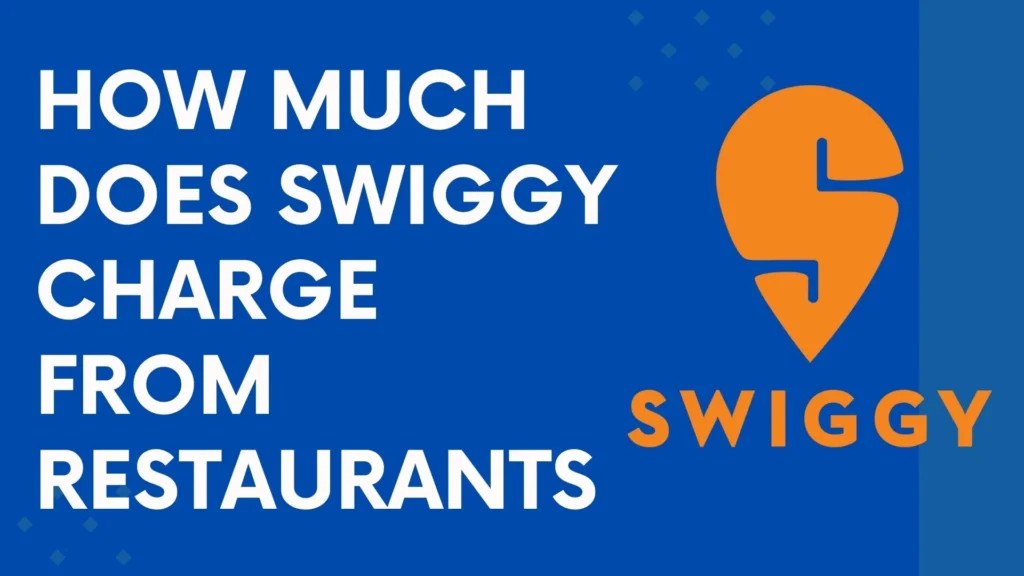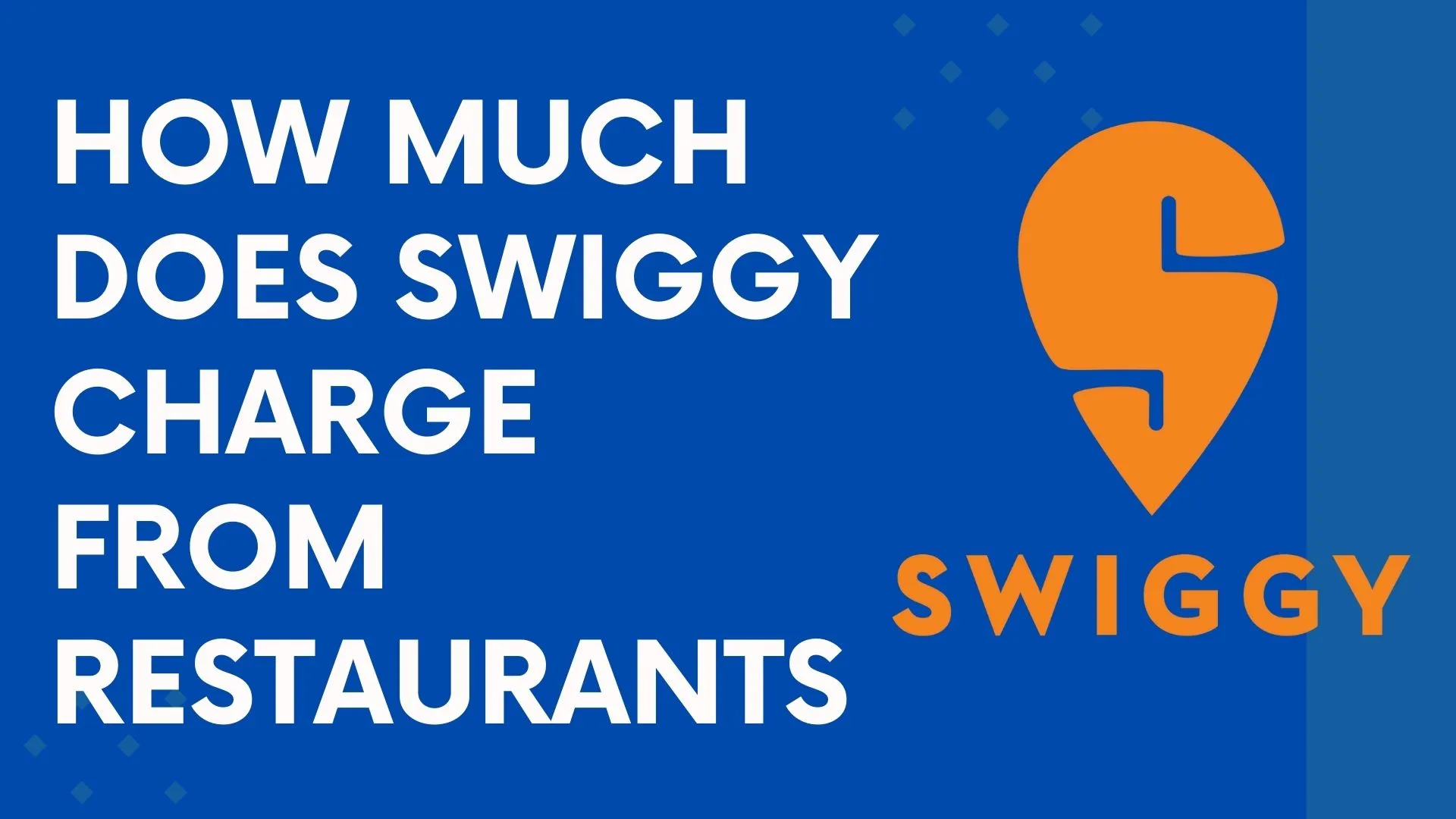Swiggy operates as a food delivery platform, facilitating customer and restaurant connections through its app and website.
Users can explore a variety of cuisines, peruse restaurant menus, and access ratings and reviews before placing orders online.
Swiggy coordinates the process by assigning a delivery partner to pick up the order from the restaurant and deliver it to the customer’s specified location. Swiggy offers comprehensive customer support, feedback mechanisms, and rating features for restaurants and delivery partners.
But the question is, how much does Swiggy charge from a restaurant, and what is Swiggy’s fee structure? All your inquiries find resolution in this blog, where we comprehensively delve into everything associated with Swiggy charges from a restaurant.

The Cost of Swiggy: Restaurant Fees Explained
The foundation of Swiggy’s business model lies in levying commissions, fees, and charges from restaurants utilizing its platform and services. The magnitude of these charges varies based on factors such as the restaurant’s type, order volume, location, competition, and engagement in promotional activities.
Given the potential impact of Swiggy’s charges on restaurant profitability and sustainability, particularly in a fiercely competitive and dynamic market, it becomes crucial for restaurants to comprehend the intricacies of these charges.
Equally important is the ability of restaurants to negotiate with Swiggy and explore alternative strategies to optimize their business operations.
Swiggy’s Fee Structure:
Swiggy’s fee structure comprises the following elements:
- Commission Rate: The commission rate represents the percentage of the total order value, inclusive of GST, that Swiggy charges restaurants for facilitating sales and delivering items through its platform. This rate varies between 15% and 25%, influenced by factors such as restaurant type, order volume, location, competition, and negotiation.
For instance, smaller establishments or cloud kitchens may face a higher commission rate compared to larger or branded restaurants due to their limited bargaining power and greater reliance on Swiggy for visibility and orders.
- Delivery Fee: Swiggy imposes a delivery fee on restaurants for assigning their own delivery partners to fulfill orders. This fee is determined by the distance between the restaurant and the customer’s location, as well as the availability of delivery partners.
The delivery fee spans from ₹10 to ₹40 per order, contingent on distance and demand. Restaurants have the option to use their own delivery partners, eliminating the need to pay Swiggy’s delivery fee.
- Additional Fees and Charges: Swiggy may apply various fees and charges to restaurants for reasons such as cancellation, refunds, packaging, marketing, and promotions. For example, a cancellation fee of 10% of the order value may be imposed if a restaurant cancels an order post-acceptance.
In the case of a customer canceling an order due to quality or service issues, Swiggy might charge a refund fee of 20% of the order value. Additionally, restaurants not providing their packaging material may incur a packaging fee ranging from ₹5 to ₹10 per order.
If a restaurant participates in promotional campaigns or offers customer discounts, Swiggy might levy a marketing fee ranging from 5% to 10% of the order value.
Impact on Restaurant Profitability:
Swiggy’s fees can exert a substantial influence on restaurant profitability and long-term viability by diminishing margins and elevating costs. According to a report by RedSeer Consulting, the average margin for a restaurant in India hovers around 20%.
However, post Swiggy’s charges, this margin may plummet to as low as 5% or even turn negative, contingent on factors like order value, commission rate, delivery fee, and additional charges. Consequently, restaurants may struggle to cover fixed costs such as rent, electricity, and salaries, potentially leading to sustained losses.
The competitiveness and customer loyalty of restaurants are also impacted by Swiggy’s charges. Restaurants might be compelled to raise prices on the platform to offset these charges or compromise on food quality or quantity to cut costs.
This, in turn, could lead to customer attrition, with patrons opting for alternatives that provide better value or quality. Furthermore, Swiggy’s charges may deter restaurants from innovating or expanding their menu or services, as the returns may not justify the investments made.
The dynamics of Swiggy’s charges are intertwined with market forces and the bargaining power of restaurants. Swiggy may adjust its charges based on order demand and supply, competition from other platforms, and negotiations with restaurants.
For instance, during the COVID-19 pandemic, Swiggy reduced its commission rate from 20% to 18% for certain restaurants due to a decline in online food delivery demand and financial challenges faced by restaurants.
Conversely, Swiggy might augment charges in response to increased demand for online food delivery or reduced competition from other platforms.
Negotiation and Alternatives
Swiggy’s fees are variable and subject to negotiation, taking into account factors like restaurant type, order volume, location, competition, and promotions. Restaurants can employ various strategies to secure favorable terms:
- Utilize Brand Value and Customer Loyalty: Leverage a strong brand and customer loyalty to negotiate lower commission rates or higher delivery fees. Well-established or branded restaurants may secure rates as low as 15%, whereas smaller establishments might face rates of 20% or higher.
- Boost Order Volume and Value: Increase order volume and value to negotiate better terms. Restaurants handling higher daily orders with larger average values could potentially secure a commission rate of 18%, while those with fewer orders and lower average values might face rates of 20% or higher.
- Opt for Own Delivery Partners: Choosing in-house delivery partners allows negotiation for lower commission rates or higher delivery fees. Restaurants with their own delivery partners might secure rates as low as 17%, whereas those relying on Swiggy’s partners might face rates of 20% or higher.
- Participate in Promotional Campaigns: Engage in promotional campaigns or offer discounts to negotiate more favorable terms. Restaurants participating in Swiggy’s promotional programs could secure a commission rate of 16%, while those not participating might face rates of 20% or higher.
In addition to negotiation, restaurants can explore alternative delivery options to optimize their business. Some alternatives include:
Explore Different Delivery Services: Consider other delivery platforms to compare rates and benefits.
- In-House Delivery Services: Establish and manage an in-house delivery service to reduce reliance on third-party platforms.
- Collaborate with Local Delivery Services: Partner with local delivery services to expand reach and potentially lower costs.
- Implement Self-Pickup Options: Encourage customers to opt for self-pickup, reducing reliance on delivery services.
- Own app or website: The restaurants can create their own app or website to accept and deliver orders directly from the customers without paying any commission, fee, or charge to Swiggy or any other platform. This can help the restaurants to increase their margins, retain their customers, and control their quality and service. However, this option may require a significant investment in technology, marketing, and delivery and may not be feasible for all restaurants, especially small or new ones.
- Other platforms: The restaurants can also explore other platforms, such as Zomato, Dunzo, Amazon, etc., to accept and deliver orders from the customers and compare their charges, services, and benefits with Swiggy. This can help the restaurants to diversify their sources of revenue, increase
By considering these alternatives and negotiating effectively with Swiggy, restaurants can strategically enhance their overall business operations.
Conclusion
In summary, understanding and managing Swiggy’s fees are pivotal for restaurants aiming to thrive in the competitive food delivery market. The diverse components of Swiggy’s fee structure, ranging from commission rates to additional charges, can significantly impact a restaurant’s profitability and market standing.
Successful negotiation, considering factors like brand value and order volume, coupled with exploring alternative delivery options, emerges as a strategic approach for restaurants to optimize their operations.
By strategically navigating Swiggy’s fees and embracing alternative avenues, restaurants can position themselves for sustained success in the evolving landscape of online food delivery.

